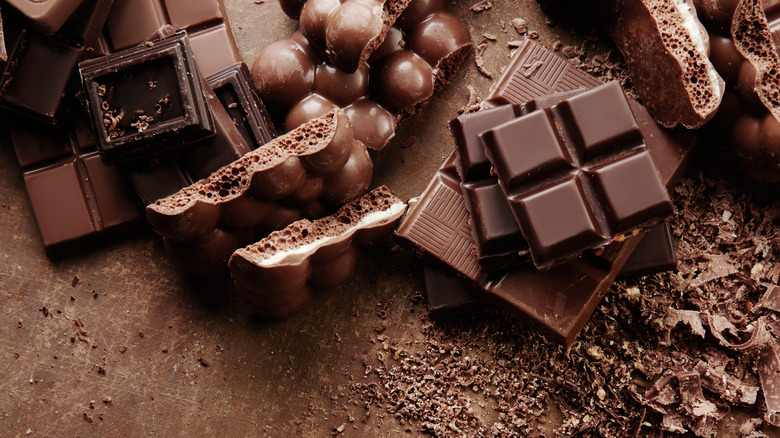Why Flies Are Extremely Important To The Making Of Chocolate
Chocolate, a worldwide favorite sweet, depends on the fragile supply chain of chance. Namely, as Smithsonian Magazine details, the cacao beans that are processed into chocolate are fermented within a pod that only develops when the flower of the cacao tree is pollinated by a particular tiny fly. These near-microscopic midges are dwarfed by their scientific names of Euprojoannisia and Forcipomyia, but without their presence, the flowers, which lack the ability to pollinate themselves, would never have produced chocolate in the first place. In plainest terms, the insects carry pollen from the male parts of flowers to the female parts of others, which prompts the process that produces cacao beans.
However, when it comes to pollination, these midges aren't particularly effective. DeWayne Shoemaker, professor of entomology at the University of Tennessee, writes in The Conversation that only 10 to 20% of cacao flowers receive the needed pollination. Theories for why this is the case suggest that the chocolate midges do not solely rely on these flowers for sustenance, so any pollination that occurs here is more by chance than focused strategy.
Others note that cacao plantations do not replicate the humid, shaded environment the midges are used to, meaning the insects seek out the shaded areas they are familiar with and leave the unshaded areas to pollinate themselves. Some places have attempted to recreate the environmental factors midges know with evidence suggesting that this does actually improve the pollination habits of the insects.
Making up for the midges
As you might imagine, a pollination rate of 10 to 20% cannot keep up with the amount of chocolate the world regularly consumes. So, people have to supplement the midge's activities.
Last year, the University of Göttingen released the results of a study completed in collaboration with the University of Tadulako of Palu that compared hand pollination to agrochemicals on Phys.org. They found that hand pollination, which involves humans manually transporting the pollen from one flower to another, increased the cacao yield by 161%.
In Costa Rica, however, Smithsonian Magazine reports that another method in which placing the cut pieces of banana plants around cacao trees also led to improved amounts of pollination as the rotting fruit encouraged the midges to come. While this method does lack the manpower needed in hand pollination, it still reflects that to get the most chocolate out of the cacao tree, environmental manipulation is needed. Otherwise, the chocolate market would descend into chaos.

